|
23. Gonepteryx rhamni (Linnaeus, 1758) / Brimstone / Pieridae – Coliadinae
NL: citroentje, citroenvlinder / D: Zitronefalter / F: citron, le papillon-citron
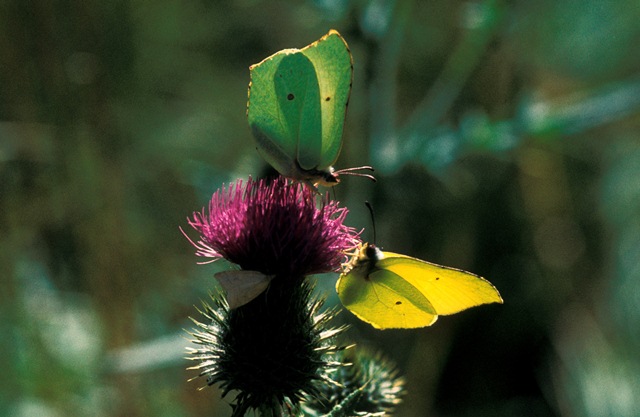 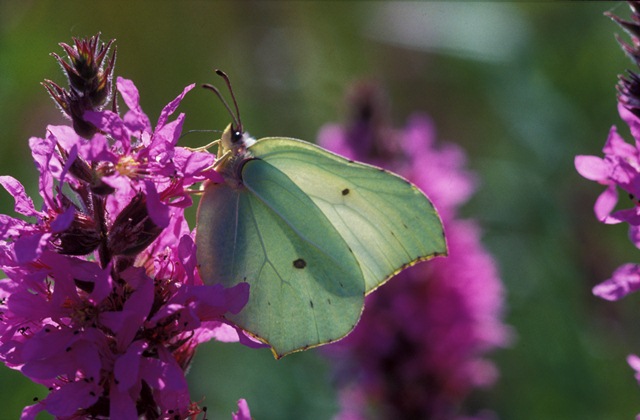 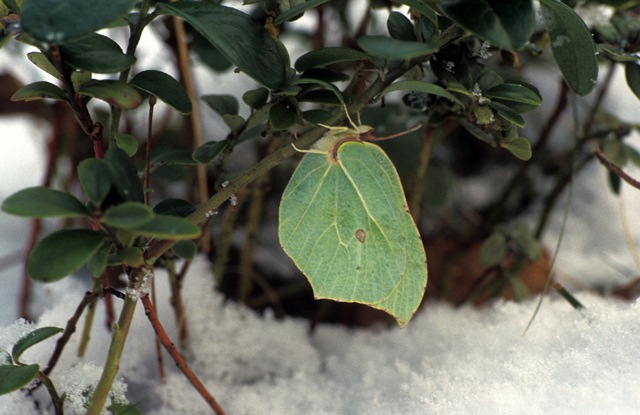
Photographs: Frits Bink ©.
Large, wing length 28 (27-30) mm. In the Benelux, present in all countries in countryside and urban gardens where it is the harbinger of spring and in woodland in the autumn.
Butterflies are on the wing from early-March until early-October and peaks mid-May and early-August. It occurs in maritime and continental climates, amplitude 5 to 18, and required climate windows is 450°d and maximum tolerated 2300°d. The corresponding climate windows are 20 weeks and 41 weeks.
Though the butterflies are recorded all over the area, including the small coastal islands, there are few places where the species is present year round. This supports the idea that this butterfly is a seasonal migrant and its spatial requirement is quite large.
Ecological characteristics
Behaviour over time
Overwintering: adult, hidden in shrub or grass tussock, near to the ground in woodland.
Reproduction: oviposition starts 2-3 weeks after hibernation when there are 95 (80-114) eggs in the body. The egg load in the ovarioles indicates a permanent egg production and because of the extremely long life span the total egg production may be 6.3 times as much.
Larval feeding periods: 4-6 weeks in the period from early-May up to mid-August.
Generations: always one.
Spreading of risk: spatial and temporal spread in oviposition.
Life cycle: egg 6 (4-8) days; larva 32 (24-43) days; pupa 12 (9-16) days.
Life span of adult: extremely long, one year.
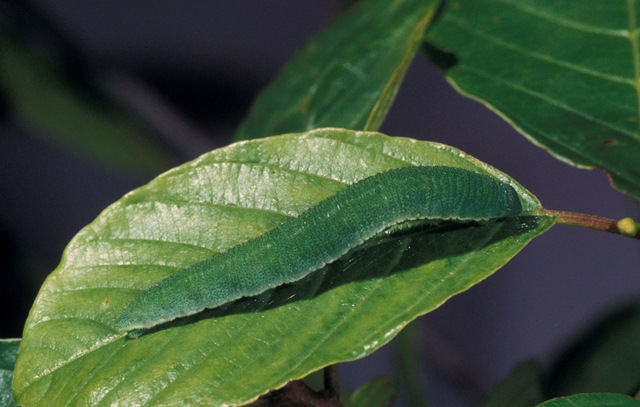
Photograph: Frits Bink ©.
Behaviour in space
From stay-at-home to migrant: nomad and also seasonal migrant.
Finding a mate: only in early spring, patrolling along wood edges and has an acrobatic courtship display as soon a female is discovered.
Orientation in the landscape: changes over time, shortly after hatching the butterfly search a nearby nectar source, in the autumn shelter places in woodland for overwintering, in spring all types of landscape were host plants can be expected, from woodland fringe, heathland with alder buckthorn and gardens in country side.
Oviposition: on young sprouts and also mature leaves of the shrub, from late-April until early-July.
Defence
Threats from other organisms: in larval stage vulnerable to avian predation, adult neglected by birds.
Threats from the environment: the adult butterfly can resist bad weather and severe cold, but for activity it needs warm and sunny weather.
Feeding habits
Adult: nectar, all kinds of flowers when they are available; in summer: thistle, purple loosestrife, in spring: willow, lesser periwinkle, in gardens; everlasting pea, bladder senna, Buddleia.
Larva: in basking position on the midrib of a leaf.
Larval foodplants
Plant species: Rhamnaceae, Rhamnus frangula, R. cathartica.
Journal
Rearing experiments based on specimens from Amerongen, Netherlands.
17 May 1981: freshly laid eggs collected.
24 May: first moult.
1 June: third instar.
5 June: last instar.
12 June: pupated.
27 June: adults appeared.
Table 23-1. Results of dissections

Table 23-2. Collection and observation localities
D, Eschweiler 50° 47’ 09”N – 6° 16’ 37”E; 18 June 1983.
EST, Endla Nature Reserve, 58° 52 34”N – 26° 16’21”E; 10 July 1999.
F, Lorraine, Damvillier 49° 21’ 27”N – 5° 24’ 21”E; 12 June 1984.
F, Lorraine, Lion-devant-Dun 300 m, 49° 23’ 40”N – 5° 14’ 03”E; 12 June 1984.
NL, Amerongen, garden 52° 00’ 01”N – 5° 27’ 34”E; 1975-1986.
NL, Bennekom, garden 51° 59’ 30”N – 5° 40’ 34”E; 1988-2014.
NL, Leersum, garden, 52° 00’ 29”N – 5° 24’ 04”E; 1975-1986.
NL, Amerongen 52° 00’ 01”N – 5° 27’ 34”E; 17 May 1981 (eggs collected).
NL, Bennekom 51° 59’ 30”N – 5° 40’ 34”E; 24 May 1990 (oviposition observed).
NL, Empense en Tondense heide 52° 08 20”N – 6° 05’07”E; 24 July 1985.
NL, Haaksbergen, Harrevelderschans 52° 08’ 59”N – 6° 46’ 45”E; 5 July 2003.
NL, Hoge Veluwe 52° 05’N – 5° 51’E; 11 July 1983, 30 July 1984.
NL, Hoge Veluwe 52° 04’ 47”N – 5° 49’ 47”E; 27 July 2000, 31 August 2000.
NL, Hoge Veluwe 52° 03’ 41”N – 5° 50’ 46”E; 31 May 2002.
S, Gotland Buttle 57° 25’ 09”N 18° 34’ 38”E; 25 June 2004.
S, Gotland, Ljugarn 57° 22’ 03”N – 18° 41’ 31”E; 24 June 2004.
S, Gotland, Russväter 57° 23 29”N – 18° 43’ 36”E; 21 June 2004.
S, Östhammar 60° 23’ 01”N – 18° 26’ 51”E; 19 August 1985.
Fig. 23-1. Gonepteryx rhamni, phenogram adapted from Fichefet et al. 2008: 83.
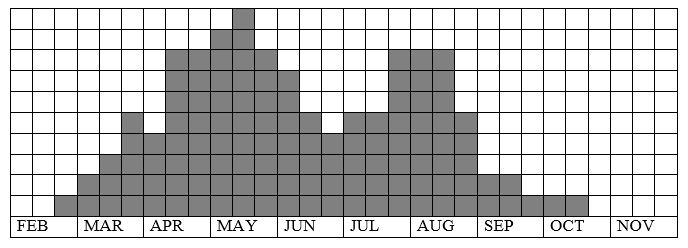
Fig. 23-2. Gonepteryx rhamni, habitat characteristics.
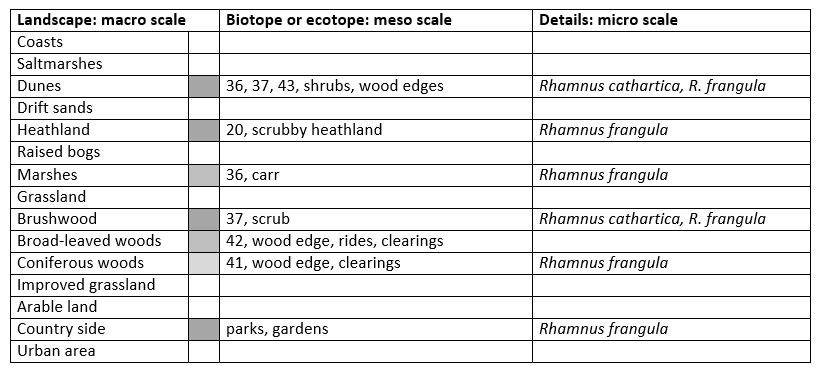
Fig. 23-3. Gonepteryx rhamni, climate matrix, heat-sums 450 - 2300°d.
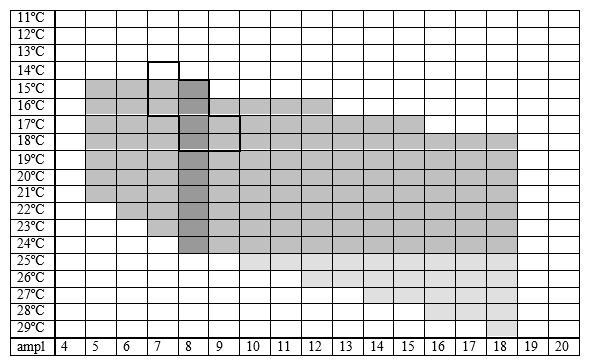
|









